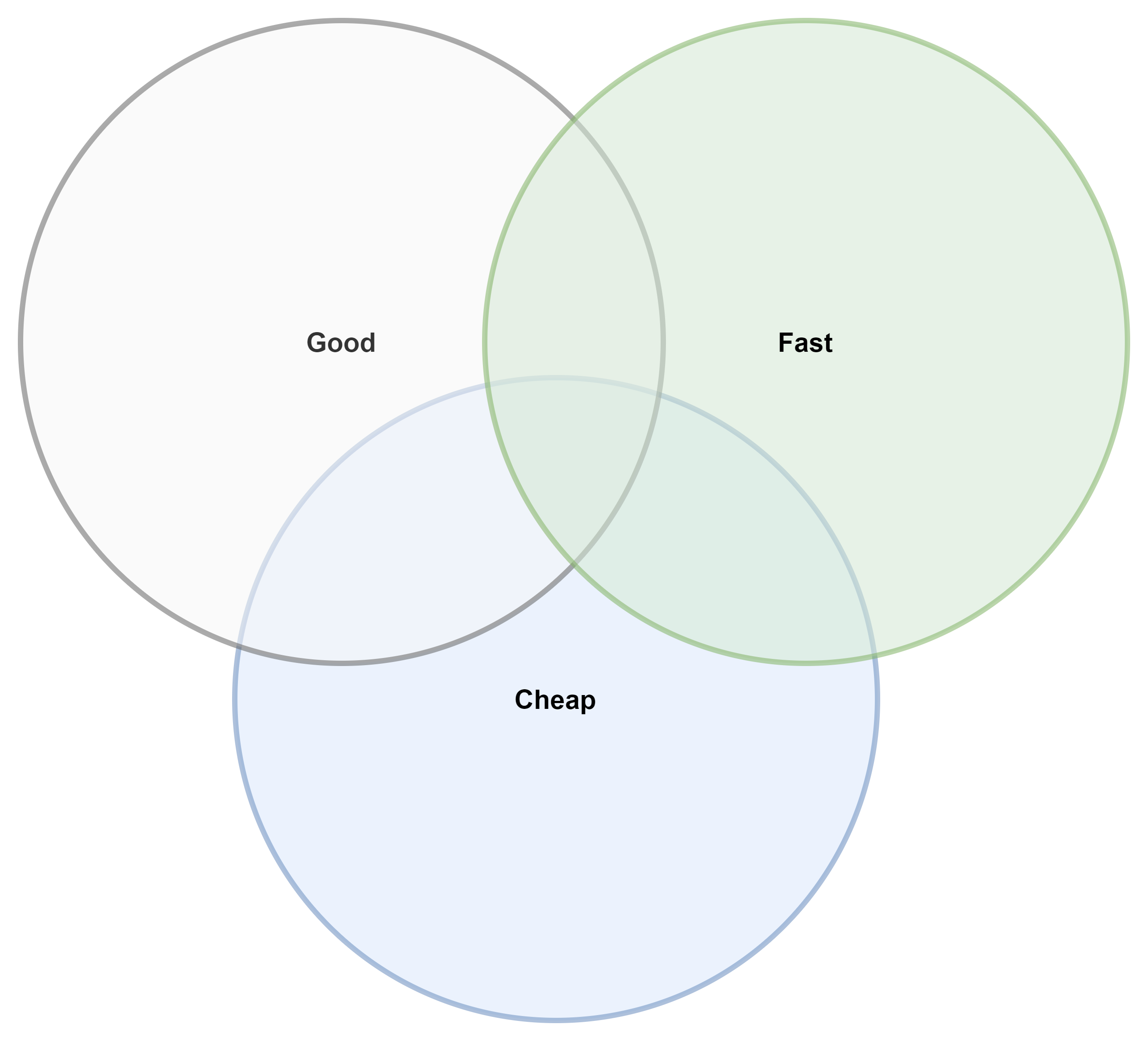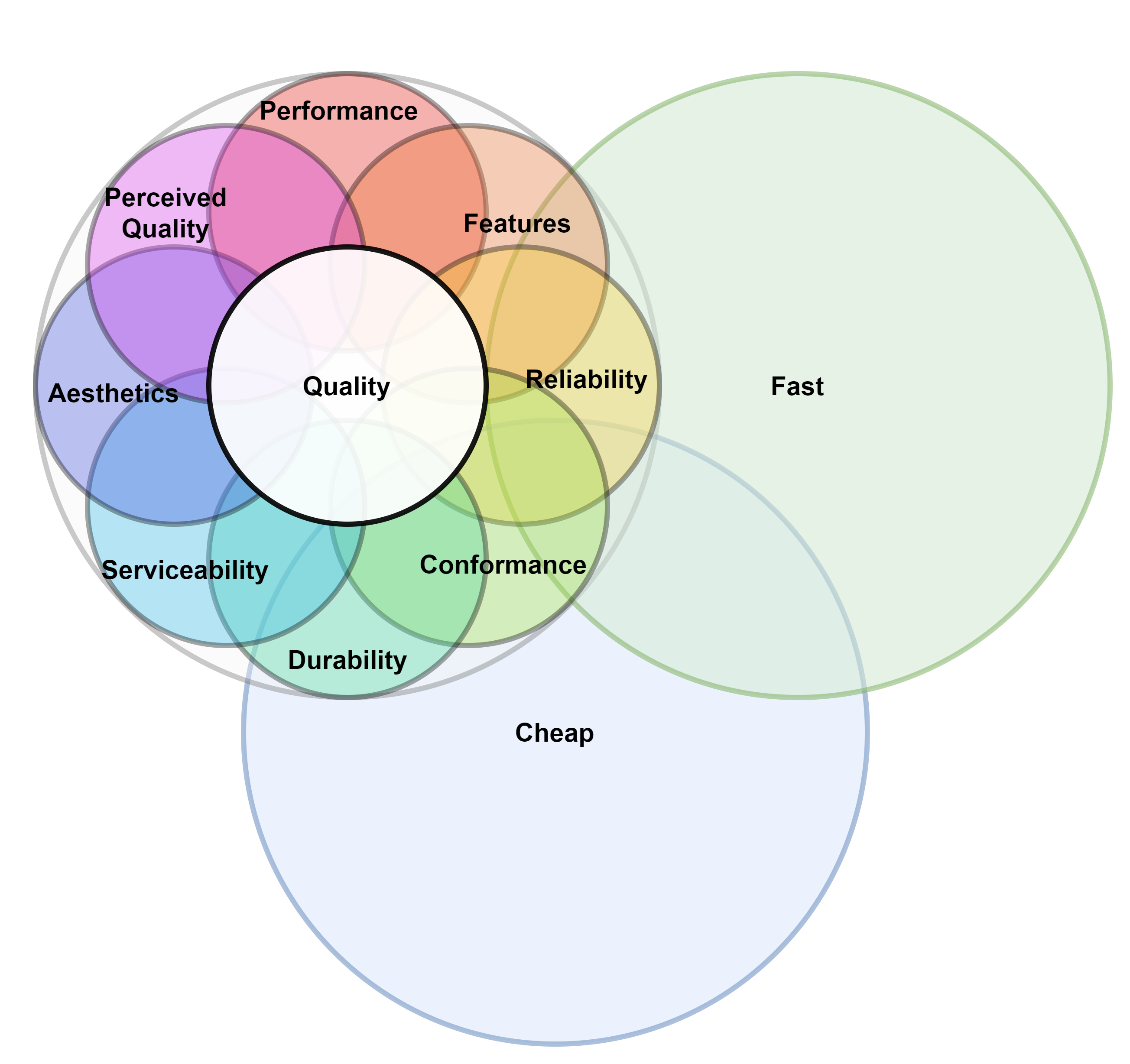Separating Concerns
Part of sharing a context means sharing the same goal, but it’s also critical to work under the same constraints and share the same values. Doing that takes time and willpower from all parties involved and I’m not in the game to influence people. One of the better ways I’ve found of conveying those is to make explicit the separate concerns and expectations you have and the iron triangle is as natural a tool to do that as any. The iron triangle is a concept that you see mirrored across a couple different domains, but the service variation is probably the most familiar. This tries to get at the idea that there are tradeoffs that need to be made in how we expect to receive services. If something is good and cheap, you are not going to get it fast. If something is good and fast, it’s not going to be cheap, and if it’s fast and cheap it’s probably not going to be very good. While some might try to argue that this is a false choice, the general sentiment still applies. 
This is a good start but I like to extend this by applying (Garvin 1987)’s Eight Dimensions of Quality to the “good” aspect because that helps more explicitly force users to choose aspects that are important to them. I do that by equating good to quality, and using those dimensions to compose that sphere.  Finally, I like to imagine that you have to put this in front of someone and force them to pick the particular spheres/attributes that they value (and perhaps consequently, what can be de-emphasized). That could be a simple checkbox, but it’s probably better to force them to rank the attributes from highest to lowest since the effort expended is allocated as such when we actually start building the damn thing.
Finally, I like to imagine that you have to put this in front of someone and force them to pick the particular spheres/attributes that they value (and perhaps consequently, what can be de-emphasized). That could be a simple checkbox, but it’s probably better to force them to rank the attributes from highest to lowest since the effort expended is allocated as such when we actually start building the damn thing.